THE GRANADA THEATRE CIRCUIT
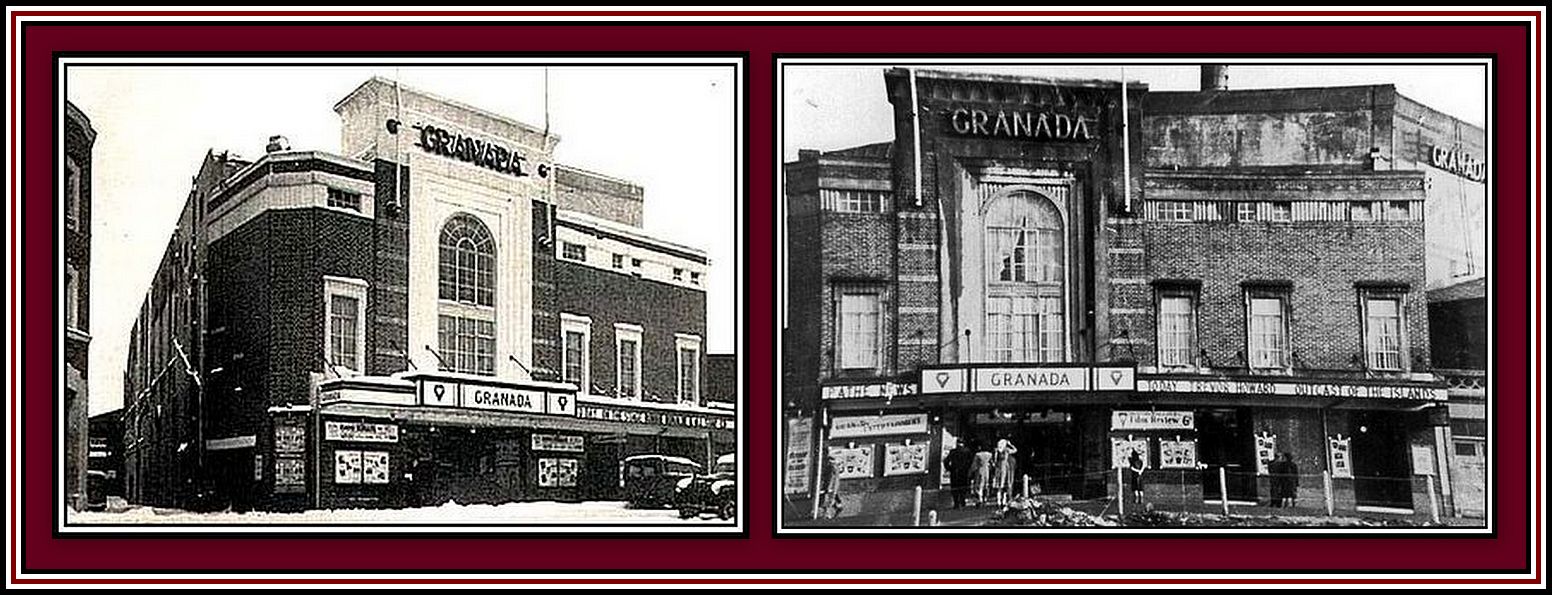 The Granada Dover
The Granada Dover
The first purpose-built Granada Theatre especially constructed for Sidney Bernstein and his Circuit
-oOo-
PART FIVE: PREPARING TO BUILD GLORIOUS THEATRES
The Granada Theatre Circuit was never large. In fact the number of cinemas that it operated was relatively small when combined to the numbers operated by the gaint circuits of the time. For example, in 1953, the Associated British Cinemas Circuit operated 281 screens in the U.K., while the J. Arthur Rank Circuits consisted of a combined total of 502 Odeons and Gaumonts. Even the lesser Essoldo Circuit operated more screens with a total number of 183.
Despite operating never more than 56 theatres, the Granada Theatre Circuit gave the big boys a run for their money during the glory days of cinema ownership. Although small in number, the cinemas operated by Granada were always thought of as being special as Mr. Bernstein insisted that each one be called a theatre. In addition, many of the theatres achieved a high standard in architectural and interior design that was rarely equaled and never surpassed by others in Britain.
-oOo-
When Sidney Bernstein inherited the family business in 1922 upon the death of his father, Alexander Bernstein, he found himself the owner of a rag-taggle collection of converted Music Halls and less-than-ideal Kinemas. It was during a trip to the U.S. at this time that he first saw the magnificent Picture Palaces that were beginning to be built in many of the major cities. Despite his admiration for these glorious buildings, he was horrified by the films being shown in them since he believed them to be of poor quality. He concluded that it was the cinema and not the film that drew people to go to the pictures. He went on to say that audiences wanted cinemas to be cathedral-like with palatial décor. In other words, customers wanted establishments that were glorious to look at and he was of the mind that few, if any, cinemas in operation in the U.K. at this time he offered the public such an experience.
And as will be seen, upon his return from the U.S., Mr. Bernstein embarked, together with his brother and a group of talented people, on the building of a number of theatres that would prove to be special …… with several being extraordinary ….. and a couple being spectacular …… but one in particular turning out to be special … extraordinary … spectacular …. and totally breathtaking!
-oOo-
Eventually the Granada Theatre Circuit would include 56 theatres. The great majority of these theatres were take overs; that is they were built for other entrepreneurs and later sold to Sidney Bernstein who then took over their operation. Once purchased by Mr. Bernstein, many were given that Granada look, which during the pre-war years often meant refurbishments overseen in most cases by Cecil Audrey Masey and Theodore Komisarjevsky.
The first thing that Sidney Bernstein did when he became head of the family business was to reclaim the lease of the Music Hall, the Empire Edmonton, which was not doing well and close it for refurbishment. The other Empires under his control were cinemas and included those at Ilford, Plumstead, East Ham and West Ham. In November 1922, he was asked to manage the Empire Shrewsbury, which he later purchased and which, as a Granada Theatre, continued to function as a cinema until 1998 and became the longest operating cinema of his early group of cinemas.
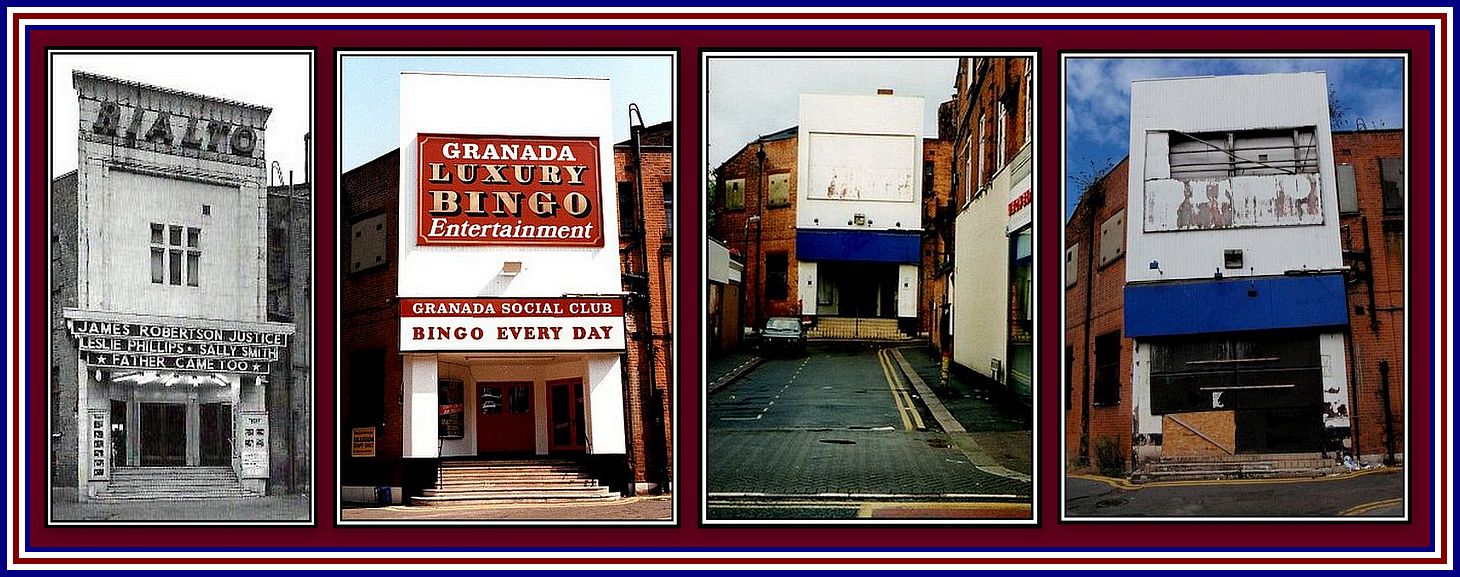 The Rialto Kinema Enfield Over the Years
The Rialto Kinema Enfield Over the Years
Left: as a Kinema; Centre Left: as a Granada Social Club;
Centre Right: as a recently closed Gala Bingo Club (1997); & Right: derelict
Later in 1925, Sidney Bernstein leased the Rialto Enfield, where he introduced an American-style soda fountain with suitable delicacies for sale and in 1926, he acquired the Rink Leytonstone, which included both a cinema and a skating rink. Cecil Audrey Masey was responsible for drawing up plans for the conversion of the building into one cinema within the old roof and walls and which was renamed, the Rialto, when reopened.
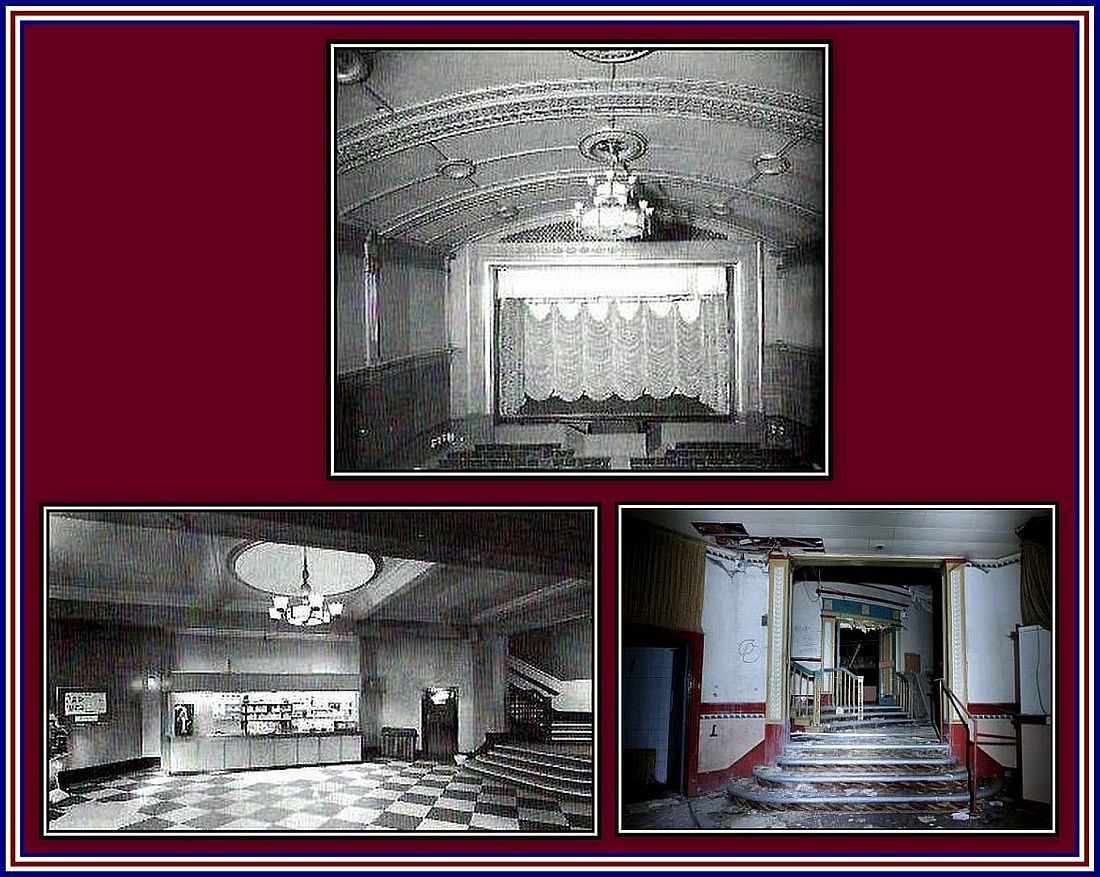 The Rialto Kinema Einfield
The Rialto Kinema Einfield
Upper: the auditorium with a typical Komisarjevsky candelier
Lower Left: the foyer – steps to the auditorium and circle seen at the right;
Lower right: the same steps following closure of the building
 The Rialto Kinema Leytonstone
The Rialto Kinema Leytonstone
Left & Centre: exterior; Right: the auditorium
In 1927, Sidney Bernstein believing that Music Hall had lost its appeal to the public and that their taste was now in going to the pictures, he had plans drawn up to re-build the Empire Edmonton and reopen it as a cinema. He also had plans to rebuild the Empires West Ham and Willesden and to replace the Empire Plumstead with a new cinema.
It was in 1927 that Sidney Bernstein began his association with Theodore Komisarjevsky. Mr. Komisarjevsky’s first assignment was to produce a number of half-hour shows for the theatres. He then went on to design what was called a very novel colour scheme for the newly revamped auditorium of the Rialto Enfield. Both Cecil Aubrey Masey, as architect, and Theodore Komisarjevsky, as interior designer, worked on the re-building of Mr. Bernstein’s Empire-Rialto cinemas and would go on to help build the later theatres during the 1930s.
In March 1928, the Empires & Rialtos of Sidney Bernstein’s circuit was sold to Denman (London) Cinemas, which was part of the Gaumont-British Picture Coporation. Mr. Bernstein and his family retained 49% of the shares of the cinema circuit and he remained as managing director of the new company.
It was said that Mr. Bernstein received £250,000 for the sale of 51% of the shares of his circuit, and that this was to provide part of the necessary monies for the foundation of a new cinema circuit. Seemingly, plans for this circuit were soon underway since:
- in September 1928, Cecil Masey was inspecting areas of Dover for a suitable site where a new cinema could be built;
- in October 1928, Sidney Bernstein entered into correspondence to purchase the site of the future Granada Theatre Tooting; and
- in December 1928, he took over the Victoria cinema in Walthamstow and began drawing up plans to construct a super-cinema on this and adjoining property.
——oooOOOooo——
ACKNOWLEDGMENTS
Some of the history of the theatres appearing here came from
The Granada Theatres by Allen Eyles. I am grateful to Mr. Eyles for this great book.
——oooOOOooo——
Click here to go to PART SIX: THE GRANADA THEATRE DOVER ……
——oooOOOooo——
Click here to return to PART FOUR:
THE GIANTS THAT MADE GRANADA GREAT
——oooOOOooo——
Click here to return to THE GRANADA THEATRE CIRCUIT
Home Page
——oooOOOooo——
Click here to return to the TABLE OF CONTENTS
——oooOOOooo——

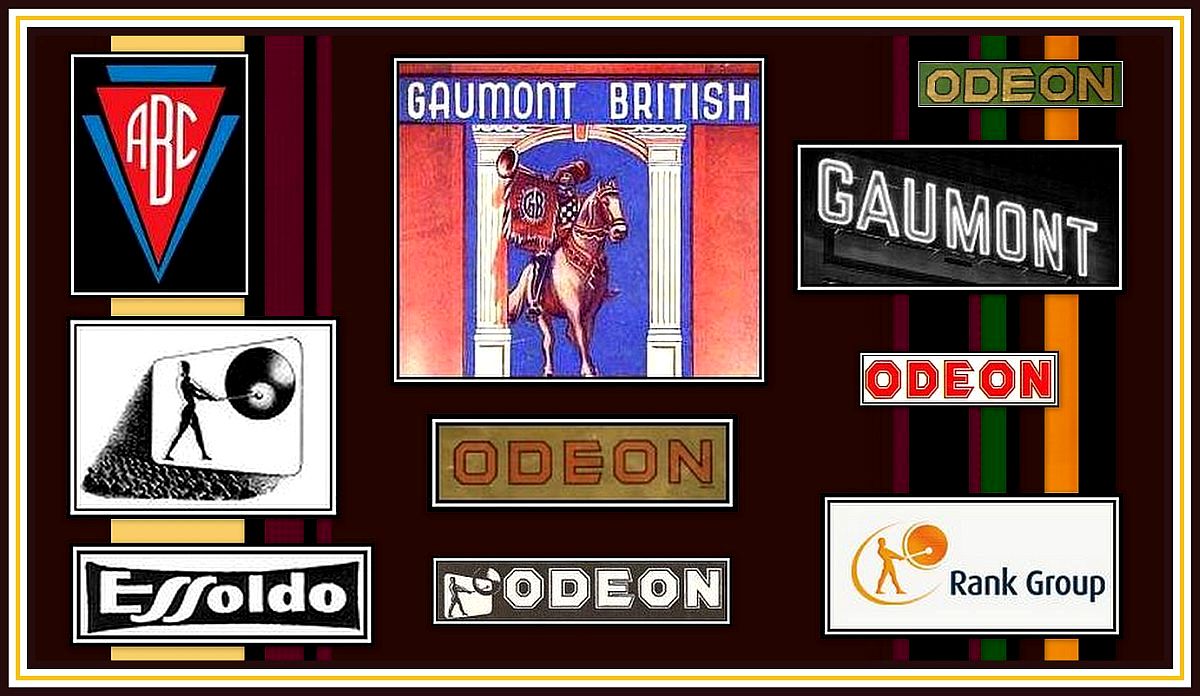
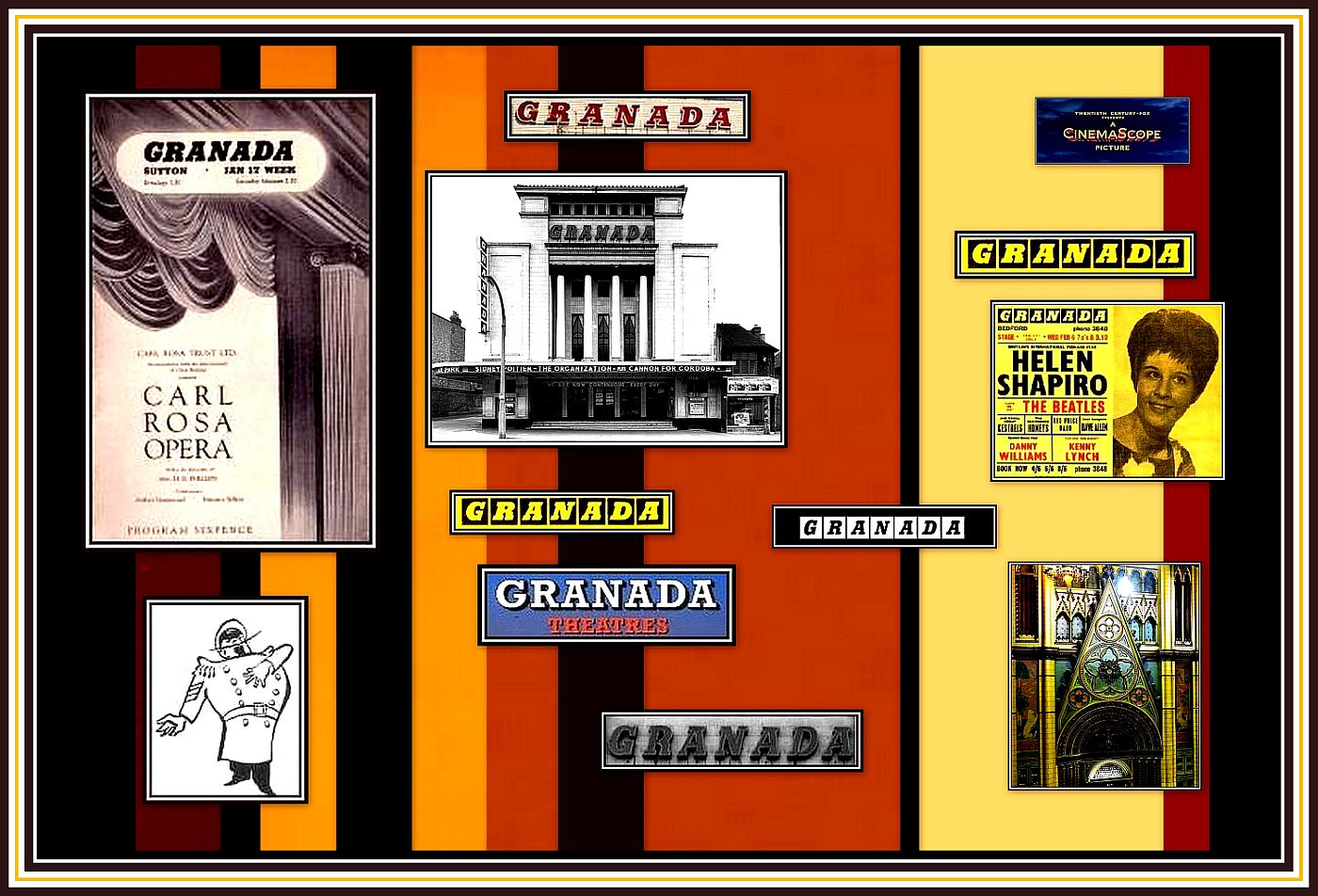
In the autumn of 1968 my father and I visited the Empire Granada Edmonton to inspect the Wurlitzer Organ, later I discovered that my maternal Grandfather, Bransby Williams 1870-1961 a famous Music Hall Artiste , had appeared on stage there before it was a cinema.
Paul Corin Liskeard Cornwall.
Hi
My Grandfather, Frank Hayward (1902-1979) did the Bernstein Circuit as an organ soloist, according to the 7th July 1938 edition of Kinematograph Weekly, as part of his early career. He later went on to quite some acclaim.
All the best.